Stephen Emmel earned his Ph.D. from Yale University in 1993 (department of religious studies, program in the study of ancient Christianity). His doctoral dissertation, “Shenoute’s Literary Corpus” (published in 2004), laid the groundwork for his current main research preoccupation, which is an international collaborative project to publish the writings of the ancient Coptic monastic leader Shenoute the Archimandrite (ca. 347–465). In 1996 Emmel was appointed professor of Coptology at the Institute of Egyptology and Coptology at the University of Münster in Germany. During the academic year 2010–11 he was on leave of absence from the University of Münster in order to serve as the first full-time professor of Coptology at the American University in Cairo. (Source: Wikipedia)
Some weeks ago, Christian Askeland discovered a crucial piece of evidence that must now necessarily be the basis for any scientifically founded opinion as to the genuineness of the Coptic papyrus fragment called the “Gospel of Jesus’ Wife.” The new evidence is a second papyrus fragment from the same source, with a part of the Gospel of John in one of the “Lycopolitan” dialects of Coptic. Because the text of the John fragment is known from Herbert Thompson’s 1924 edition of the fourth-century “Qau codex” (a few minor textual variants notwithstanding), and because the John fragment appears to have belonged to a codex leaf, it is possible to calculate hypothetically the approximate reconstructed dimensions of the complete leaf.
Using conservative measurements taken provisionally from scaled photographs, and assuming that the codex had only one column of writing on each side, the results of my calculations are as follows (the dimensions are given height × width):
minimally: 44 × 22 cm (and surely no smaller), proportion 0.50
on average: 49 × 25 cm (width quite possibly greater), proportion 0.51
maximally: 54 × 27 cm (width quite likely greater), proportion 0.50
These dimensions, if accurate, would mean that the John fragment represents the tallest papyrus codex yet known. Otherwise, the tallest papyrus codex known to me is a Greek codex, one complete leaf of which survives in the Berlin Papyrussammlung, measuring 40.4 × 21.5 cm. Papyrus codices taller than 35 cm are on the whole rare.
Assuming that the John manuscript was a two-column codex results in dimensions that are even more incredible (height × width):
minimally: 17 × 40 cm (and surely no smaller), proportion 2.35
on average: 20 × 45 cm (width quite possibly greater), proportion 2.25
maximally: 23 × 49 cm (width quite likely greater), proportion 2.13
The widest papyrus codex on record (so far as I know) is a Greek codex with dimensions of 28 × 37 cm (height reconstructed). As of 1977, the papyrologist and codicologist Eric G. Turner knew of only four such papyrus codices that are wider than they are tall. The greater than 2 : 1 proportion (width : height) of the hypothetical two-column John codex is without parallel in Coptic, Greek, and Latin papyrus codicology. The closest proportion recorded by Turner is 1.9 : 1, but the one known example with this proportion is small in size, only 9.8 × 19 cm. Papyrus codices laid out in two columns are in any case rather rare.
Thus the reconstructed John manuscript is either an extraordinarily tall and narrow single-column codex, or it is a short and even more extraordinarily wide two-column codex. If its existence be accepted as a fact, it would appear to deserve to be acknowledged as the tallest (or widest) papyrus codex yet known. Among extant papyrus codices written in Coptic in particular, this hypothetical John codex would stand out as even more extraordinary.
For myself, this codicological analysis of the John fragment strengthens still further the conclusion to be drawn from observations that other scholars have brought forward in recent weeks about its text, orthography, and paleography. I do not see how there can be any room for doubt in anyone’s mind that the John fragment is but the product of a hoax. That this conclusion has implications for judging the genuineness of the Gospel of Jesus’ Wife fragment is obvious, and the demonstrable certainty that the John fragment is a fake confirms me in the opinion that the Gospel of Jesus’ Wife fragment too is a fake, a product of the same hoax that has brought us a new (but worthless) witness to the dialect-L5 Coptic version of the Gospel of John.
On the other hand, the application of several “hard science” techniques of analysis to both the Gospel of Jesus’ Wife and the Gospel of John fragments – namely, radiometric dating and two types of spectroscopy – has resulted in a quantity of useful data, but the interpretation of these data must now be reviewed in light of the exposure of both fragments as having been inscribed only recently. In the hope and expectation that an increasing number of ancient manuscripts will be subjected to such analyses, students of ancient manuscripts need to become at least somewhat familiar with how these analytical techniques work, what kinds of data they produce, how the data are to be interpreted, and – perhaps most importantly – what questions the data might be used to answer.
Finally, as seriously as I take codicology, radiometric dating and spectroscopic analysis of ancient manuscripts, Coptic grammar and orthography – and also the existence of faked Coptic manuscripts – nevertheless, at the end of my paper I offer a somewhat light-hearted bit of food for thought in connection with the question of what might have motivated the person who faked these Coptic papyri.
Contents:
Introduction
How Much Text Is Missing from the “Harvard John Fragment”?
What Are the Dimensions of the Harvard John Fragment?
Reconstructing a Complete Codex Leaf from the Harvard John Fragment
Comparison of Reconstructed “Codex H” with Extant Papyrus Codices
An Alternative Reconstruction: A Two-Column Codex H?
No Codicological Reconstruction of H Is Entirely Credible
Conclusions from the Codicological Analysis
The Spectroscopic Studies: A Critique from a Layman
P.S. Yet More Nails for the Coffin?
P.P.S. Was the New Gospel of John Fragment Meant to Be a Joke?
DOWNLOAD STEPHEN EMMEL’S PAPER HERE












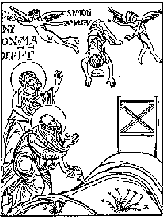




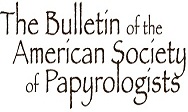
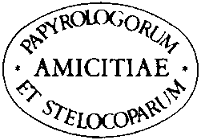
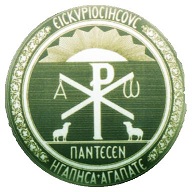





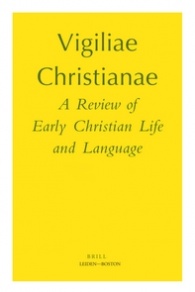






Very interesting, thank you for this post. May I know if the comparanda data for the codex measures mentioned in the post are limited to those available through Turner Early Codex 1977, or if a wider and systematic research has been conducted?
I relied on Turner’s 1977 list of codices (but checked his data when I judged it important to do so for this purpose of this paper) and some other data known to me incidentally. I have never tried to update Turner’s list systematically, nor even to find out if anyone has ever done so. I would be glad to learn of any large-size papyrus codices that have become known since the 1970s.
PS. I should add that because the text of the John fragment alone so clearly condemns it as a fake, evidence for the existence of genuine papyrus codices taller than 44 cm would not change anything significantly for the evaluation of the John fragment; it would only somewhat mitigate the codicological evidence against the genuineness of the John fragment, but the codicological evidence is in any case not as decisive as the textual evidence is. But I continue to be interested in large-size papyrus codices simply because I am interested in papyrus codicology in general, in all its aspects.
This is excellent work. I contacted the Columbia spectroscopy team in April to offer more “authentic” control samples of modern carbon inks on papyrus than those they described in the HTR paper and its supporting materials. The vine carbon they used contains salts and other non-carbon ingredients and looks quite different even to the naked eye than the “commercial lampblack” they used, which is made not by burning oil but acetylene gas, according to Kremer Pigments, the manufacturer. I also told them I thought it made a difference that the GJohn/GJW forger used a brush, since a brush scribe, unlike one using a pen, can dip the tool into water and then into dry pigment to load the brush, which might account for the variability of the ink color in both forgeries. This is important because the lab said they wanted samples made according to strictly controlled recipes, and when I explained that the actual practice of writing with carbon ink made such specificity difficult they seem to have lost interest. I will send them another message.
It is easy to make more historically authentic lampblack ink: I put a cotton wick in a lamp replica and burned olive oil beneath a shallow ceramic dish and in two minutes I had enough velvety carbon on the dish to write twenty GJWs. This carbon looked finer-grained than the Kremer lampblack, but that may just have been because it was deposited directly on the dish. I added some distilled water and a few crumbs of gum Arabic and stirred it with a brush. The resulting ink was very good for writing with a pen or brush on papyrus. It also dried very quickly in the dish, so it would be doubly impossible to specify the exact proportions of water to pigment — it is constantly changing. I think it is possible that the forger did not use an organic binder for fear it would be easier to date, and because the binder helps to homogenize the distribution of pigment particles that may also have contributed to the washed out uneven look of the forgeries.
It seems to me that you are certainly on the right scientific track with regard to experimentation with the spectroscopic analysis of carbon inks. But I doubt that either the GJW fragment or the John fragment was written using a brush. I think people got that impression because the photos of the fragment that were made available on the internet are so greatly magnified. Also, the writer seems to have had difficulty with the surface of the papyrus and had to redo some of his strokes here and there, in an effort to get a result more like what he got on the John fragment (the papyrus surface of which clearly was much easier to write on). I found it instructive to make a printout of GJW at 1:1 scale and see how small it really is. I think the writer used something like a “reed” (rush) pen, with not too fine a tip, and that he was not very practiced with it and had trouble with his writing surface for GJW.
Dr. Emmel is correct that the forger of GJW was not very practiced and had trouble with the writing surface, and I am not certain what tool was used. My belief that he or she may have used a brush of some kind is based on both examining high resolution images and extensive experience writing my best approximations of the GJW and GJohn scripts to true scale on modern papyrus, using both a reed pen (the equivalent of the Egyptian phragmites communis) and a brush (in this case a cheap round-ferruled watercolor brush cut flat perpendicularly to the handle). I have read (and the forger may have too) W J Tait’s 1988 article about the tools used by much demotic/hieratic scribes, that is, brushes made from rushes (juncus acutus), a completely different plant from the ones used for reed pens. And I have written him for more information about how exactly these rush brushes were cut, since I want to experiment with all possible tools to look for evidence that might include/exclude them. But I don’t really believe that the forger would have used a rush brush when a functionally similar tool was readily available (though I suppose it is possible that the highly uneven GJW was written with a much cruder brush (or brushes) than the one used for the comparatively well-executed GJohn fragment.) The evidence of the tool used in the GJW fragment is greatly complicated by the inconsistent ductus of the letters, which vary in basic stroke sequence as well as the tool angle and number and direction of strokes. But the absence of an underlying rigid pattern of consistent angle-dependent thick and thin strokes, which should appear even in ineptly written, heavily overstroked/corrected/reinforced letters, makes me pretty sure that a brush was used. Several paleographers have suggested that the writing tool is a pen with a damaged nib, but I have not been able to damage a reed pen in a way that produces letters that look like the forger’s. It may seem unlikely that a brush could write letters as small as those in the King fragments, and when I calculated the scale (roughly 3.5-4.5 mm) I had my doubts about my ability to write them that size, but in fact it was easy to write GJW-oid letters, some as small as 2.5 mm. Further, a brush cut as described above can produce an unsteady simulacrum of the hairlines and square terminals of a reed pen, as seen in the GJohn fragment, even if there are also telltale swellings that there could not be produced by a single stroke of a reed pen. My very first reaction to the sight of the GJohn fragment, by the way, was not that it was an obvious forgery, but that I had been wrong that nobody ever wrote Coptic letters that looked like the ones in GJW, since the ductus was so similar.
For writing a modern forgery on ancient papyrus a brush has three critical advantages: For one thing it subjects the papyrus to much less stress than a reed pen, which can be wielded delicately but still would be very hard on deteriorating fragments as fragile as those used for GJW or GJohn. Furthermore a forger writing on a scrap of old papyrus would have to be very careful not to let the ink flow onto the inner perpendicular stalks exposed by historical damage as well as at the edges of the scrap — because its hairs hold the ink more securely and deliver ink more evenly, a brush is much less likely to flood ink that would soak into the lower layers. A pen, by contrast, delivers ink to the writing tip by pumping it through a single crack in the nib that widens and narrows as the pen moves over the rough surface and as pressure is applied and released. The relatively large amount of loose ink that is present at the tip would be drawn into the damaged surface of the old papyrus (I haven’t tested this on old papyrus myself, but it is much easier to write well-formed letters on highly absorbent paper with a brush than a pen — a dry brush will write especially well, whereas a dry pen won’t write at all). Third, the physical shape of the brush tip in contact with the paper means that most of the time the ink is delivered from the sides of the hairs rather than the ends, allowing it to pass over small anomalies and deliver ink only to the top surface, where it should be, and avoid the lower layers, where it shouldn’t. I haven’t examined the fragments in person, but I have seen no incontrovertible signs of contamination of lower layers. I have seen evidence that the scribe was avoiding it: the clue that made me instantly suspicious of the GJW in 2012 was that the scribe was so obviously shy of the left and right edges of the scrap, where lower layers would be particularly susceptible to contamination — compare the random way letters and words begin and terminate at the edges of any random scrap from a similarly fragmentary papyrus and I am confident that you will see what I mean.
Thank you for these interesting comments. Very good that you have experimented so much with simulating the production of these faked texts. Everything you report sounds relevant to me. I agree with you about the suspicious appearance of the text around the edges of GJW; John seemed to me to be different in this respect, which is part of the reason why I think that it must have offered the scribe a better writing surface than GJW did, and that it is perhaps not so fragile as one might think, at least not so fragile as GJW most likely is (because so much of the back surface of the fragment has broken away). You have convinced me (in part because of your care to distinguish between a reed pen and a rush pen) that the brush hypothesis deserves more consideration than I had thought, at least for GJW.
Pingback: The tallest tale ever: Emmel on the inauthenticity of the Gospel of Jesus’ Wife | Voces anticae
Pingback: Encore le papyrus soi-disant de l’épouse de Jésus. Un article de Stephen Emmel » Serge Cazelais
Pingback: Encore le papyrus soi-disant de l’épouse de Jésus. Un article de Stephen Emmel. » Serge Cazelais
Pingback: Biblical Studies Carnival – June 2014 | Reading Acts
Because the fragments of Coptic papyrus that I have seen were all exceedingly fragile, I assumed that a forger would choose an anachronistic brush primarily because a pen would catch and tear the exposed fibers of old papyrus. This was the only aspect of my argument for brush-writing that I haven’t been able to try myself. In response to the post above I recently looked hard at the best images of GJohn and GJW and would now say that the surface appearance of the fragments is such that neither scrap is obviously deteriorated, and that a lightly handled reed pen would not necessarily produce damage. But I still think the other advantages of a brush apply, and that the pattern of thick and thin strokes in both papyri look more like brushwork than broad-pen-work. The integrity of the papyrus surface may indicate that the fragmentation is itself forged, with someone teasing apart the reed strips to simulate disintegration.
Pingback: The tallest tale ever: Emmel on the inauthenticity of the Gospel of Jesus’ Wife – Voces anticae